Explore web search results related to this domain and discover relevant information.
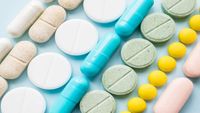
The first step, the Facility Readiness ... Drug Master File before going live. The second step, the Application Submission Phase, builds on this by expediting reviews and inspections. With imports still dominating and new policies scrambling to close the gap, the US pharma industry faces a tough ...
The first step, the Facility Readiness Phase, allows manufacturers to seek technical advice, pre-operational reviews, and maintain a facility-specific Drug Master File before going live. The second step, the Application Submission Phase, builds on this by expediting reviews and inspections. With imports still dominating and new policies scrambling to close the gap, the US pharma industry faces a tough balancing act: steep tariffs and trade risks on one hand, and a rushed push for domestic revival on the other.While Trump talks tough on pharma tariffs, over 50 percent of the drugs consumed in the US come from overseas, highlighting the country’s deep reliance on importsUS President Donald Trump has constantly threatened to impose pharma tariffs as high as 200 percent while also signaling to push the sector under Most Favored Nation (MFN) trade agreement. However, the irony is stark - while the US talks tough on trade barriers, most of its drug supply comes from overseas.This dependency is decades in the making. Until the early 2000s, pharmaceutical production was mostly domestic. Globalisation gradually shifted the balance, making overseas plants the backbone of the US drug supply.
The amount of money people spend on prescription drugs has nearly doubled since the 1990s. Much of this increase is due to expensive brand-name drugs...
We looked into changes in the drug industry and found that pharmaceutical and biotechnology sales revenue increased from $534 billion to $775 billion between 2006 and 2015. Additionally, 67% of drug companies increased their annual profit margins during the same period—with margins up to 20 percent for some companies in certain years.In addition, experts noted that market pressures such as rising research and development (R&D) costs, fewer drugs in development, and competition from generic drugs, have driven structural changes in the industry such as increased use of acquisition by large drug companies to obtain access to new research.From 2008 through 2014, worldwide company-reported R&D spending, most of which went to drug development (rather than research), increased slightly from $82 billion to $89 billion in 2015 dollars. During the same period, federal spending, which funded a greater amount of basic research relative to industry, remained stable at around $28 billion.In addition to grants, several federal tax provisions provided incentives for industry R&D spending, including the orphan drug credit, available for companies developing drugs intended to treat rare diseases, which increased more than five-fold from 2005 through 2014.
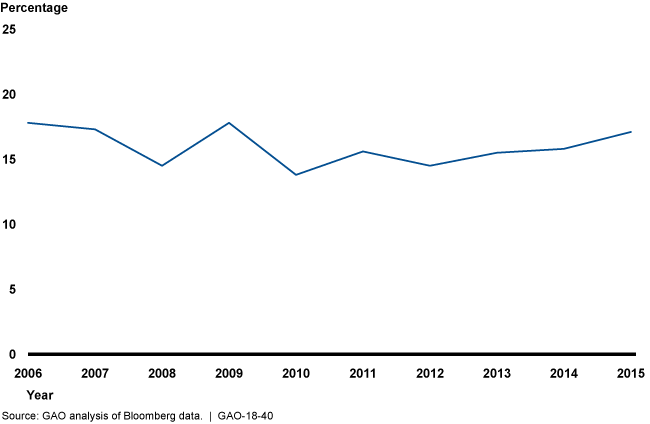
The pharmaceutical industry entails the discovery, development, and manufacture of drugs and medications (pharmaceuticals) by public and private organizations.
The modern era of the pharmaceutical industry—of isolation and purification of compounds, chemical synthesis, and computer-aided drug design—is considered to have begun in the 19th century, thousands of years after intuition and trial and error led humans to believe that plants, animals, and minerals contained medicinal properties.The unification of research in the 20th century in fields such as chemistry and physiology increased the understanding of basic drug-discovery processes. Identifying new drug targets, attaining regulatory approval from government agencies, and refining techniques in drug discovery and development are among the challenges that face the pharmaceutical industry today.The continual evolution and advancement of the pharmaceutical industry is fundamental in the control and elimination of disease around the world. ... Should the U.S. Government Regulate Prescription Drug Prices?The following sections provide a detailed explanation of the progression of drug discovery and development throughout history, the process of drug development in the modern pharmaceutical industry, and the procedures that are followed to ensure the production of safe drugs.


The four sources, who asked not to be named because discussions between the administration and industry have been confidential, said it is their understanding that Trump will not announce specifics on any pharma tariffs on Wednesday. Still, the largest multinational drug companies now expect U.S.
Trump may announce on Wednesday a study looking at how the industry-specific tariffs could be applied, three of the four sources and an additional source familiar with the matter said. Large drugmakers have global manufacturing footprints, mainly in the U.S., Europe and Asia, and moving more production to the U.S.While the situation remains fluid, the industry is hopeful that any initial tariff announcement on the sector would be below the 25% Trump has repeatedly threatened, the same source said. The White House did not immediately respond to requests for comment. There may be a growing acceptance within the Trump administration that moving drug manufacturing to the U.S.Still, Trump has pushed for the fees, arguing that the U.S. needs more drug manufacturing so it does not have to rely on other countries for its supply of medicines. Another of the four sources, an industry lobbyist, said the pharma sector is also hopeful that compliance with U.S.Maggie is a Britain-based reporter covering the European pharmaceuticals industry with a global perspective. In 2023, Maggie's coverage of Danish drugmaker Novo Nordisk and its race to increase production of its new weight-loss drug helped the Health & Pharma team win a Reuters Journalists of the Year award in the Beat Coverage of the Year category.

The widespread drug shortages that reached alarming levels in 2024 served as a critical warning for the pharmaceutical industry. From cancer treatments and insulin to ADHD medications and diabetes drugs like semaglutide - patients faced delays, substitutions, and uncertainty.
Jamil Ahmed, distinguished engineer, Solace looks at Europe's drug shortage crisis and how to end it with modern integration.Other industries have shown a way forward. Retail and logistics operate on real-time, event-driven data flows, and mistakes in these industries rarely mean the difference between life and death. When a customer places an order, stock levels, supply routes, and replenishment schedules update instantly, with appropriate levels of visibility of each provided throughout the system.Moving forward, Europe’s pharmaceutical industry must:Home Pharmaceutical Insights + Latest Pharmaceutical Insights Ending Europe’s drug shortage crisis with modern integration
Teva Pharmaceutical Industries Limited (TEVA) Gains FDA Nod for Pediatric Migraine Drug AJOVY
We recently compiled a list of the 10 Overlooked Healthcare Stocks to Invest in. Teva Pharmaceutical Industries Limited is one of them. Teva Pharmaceutical Industries Limited (NYSE:TEVA) tops our list for being one of the overlooked stocks. It is experiencing strong momentum driven by recent product innovations and strategic initiatives.Teva Pharmaceutical Industries Limited (NYSE:TEVA) tops our list for being one of the overlooked stocks. It is experiencing strong momentum driven by recent product innovations and strategic initiatives. A major development is the FDA approval of AJOVY for pediatric migraine patients aged 6–17, expanding TEVA’s reach in the pediatric market.Teva Pharmaceutical Industries Limited (NYSE:TEVA)’s “Pivot to Growth” strategy focuses on innovation, operational efficiency, and specialty pharmaceutical expansion. The company targets a 30% operating margin by 2027 and plans to achieve approximately $700 million in net cost savings, building on $140 million in annual run-rate savings already realized in 2025.
Four strategic bets and a suite of capabilities for the pharma industry to help you determine how your company can create value in the future.
They should adopt strong venture-capital-like disciplines in portfolio management to confirm their R&D dollars are focused on products that can move the needle for both patients and investors. As a result, they can help change fundamentally the cost and timeline for bringing new drugs to market while expanding the possibilities to address unmet medical needs.Low- and middle-income countries prioritization. Is the quest for drug volumes sufficiently acute, given price reductions in the US/West, to move low/middle income countries higher on the priority list for investment and focus?Continued push to cut drug prices. Around the world, including the premium-priced US market, efforts are intensifying to help reduce the price of medicines.While virtually every company is working to improve R&D productivity, companies in this model can fundamentally reinvent how drugs are discovered and developed.
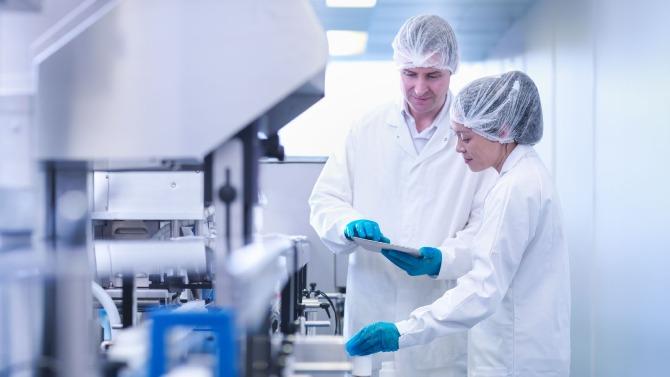
More than any other industry, the pharmaceutical sector is highly dependent on research and development, with companies investing around 20 percent or more of their sales revenues in R&D projects. This share can be much higher at companies that specialize in research and generate low sales.
More than any other industry, the pharmaceutical sector is highly dependent on research and development, with companies investing around 20 percent or more of their sales revenues in R&D projects. This share can be much higher at companies that specialize in research and generate low sales. The discovery of new drugs is vital for the continued growth of pharmaceutical companies, and sales of new branded drugs can provide sizeable contributions to total revenues.However, the loss of patent protection can have serious consequences, and competition from generic drugs is a major challenge for companies. The expiration of a product patent can result in a significant reduction in revenues, as experienced most recently by AbbVie’s Humira. The COVID-19 pandemic has shown how important a role the pharmaceutical industry can play – when effective cooperation and synchronization with other segments of the health care system are given.Total global generic drugs market forecast from 2023 to 2033 (in billion U.S. dollars) Premium Statistic Revenue of the OTC pharmaceuticals industry worldwide 2018-2029Pharmaceutical industry - number of new substances 1998-2023 · Number of new chemical or biological entities developed between 1998 and 2023, by region of origin · Basic Statistic Pharma companies worldwide with active R&D pipelines 2001-2024 · Pharma companies worldwide with active R&D pipelines 2001-2024 · Total number of pharmaceutical companies with active R&D pipelines worldwide from 2001 to 2024 · Premium Statistic Number of novel drugs approved annually by CDER 2008-2023
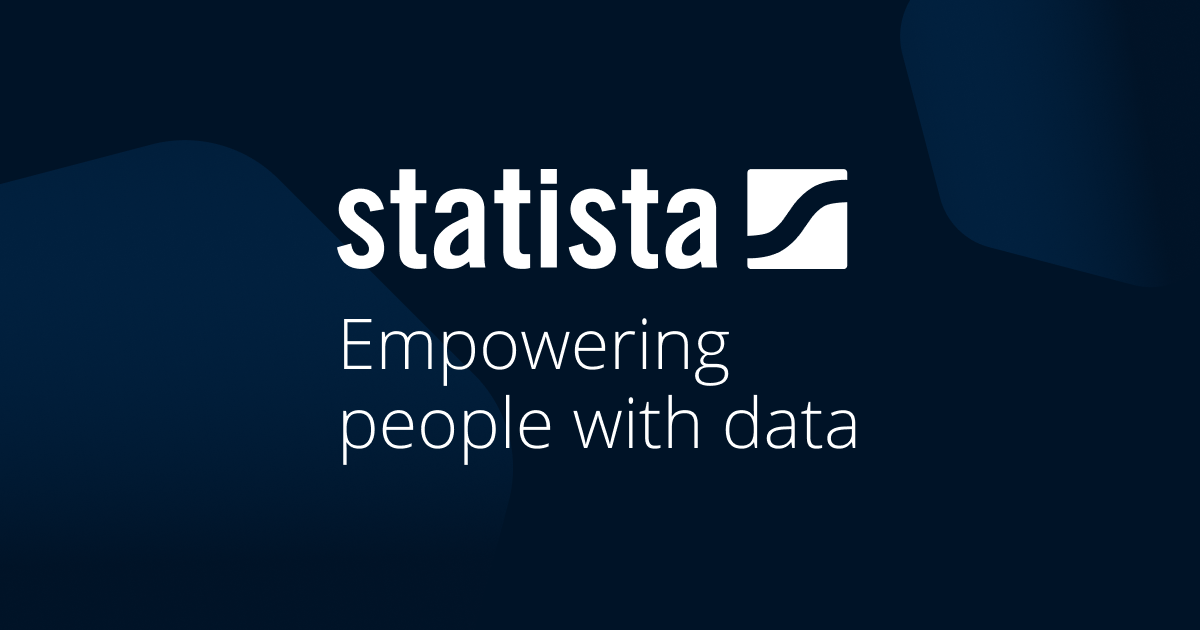

NEW YORK, Aug 7 (Reuters) - The Trump administration has been talking to drugmakers about ways to raise prices of medicines in Europe and elsewhere in order to cut drug costs in the United States, according to a White House official and three pharmaceutical industry sources.
Drugmakers generate most of their sales in the U.S. The Pharmaceutical Research and Manufacturers of America - the industry's main lobby group - has always argued that cutting U.S. prices would stifle innovation by lowering R&D spending.Despite the Trump administration's tariff threats and pressure to move more manufacturing to the U.S., the push to raise European drug prices is its top priority in discussions with industry, according to a senior executive at a European drugmaker, who spoke on condition of anonymity about the confidential meetings.An E.U. Commission spokesperson said it is in regular contact with the pharma industry and pointed to an agreement with the U.S. that should it impose tariffs on pharmaceuticals, they would be capped at 15%. When asked how the administration would support international drug price negotiations, the White House official referred Reuters to Trump's most favored nation executive order from May.That order directed trade officials to pursue trade and legal action against countries keeping drug prices below fair market value. In last week's letters, Trump complained that since the May executive order, most industry proposals had simply shifted blame for high prices or requested policy changes that would result in billions in industry handouts.

European pharmaceutical stocks slumped, continuing a selloff that started with US-listed peers after President Donald Trump escalated his campaign to pressure drugmakers to lower prices in the country.
The production of Paramax tablets is a good example, as shown in the following table. In other words, the pharmaceutical industry produces far more by-products than products. ... Source: [77] Fig. 2.1. The breakdown of materials in the production of a drug is: 56% solvents, 32% water 7% reactants, ...
The production of Paramax tablets is a good example, as shown in the following table. In other words, the pharmaceutical industry produces far more by-products than products. ... Source: [77] Fig. 2.1. The breakdown of materials in the production of a drug is: 56% solvents, 32% water 7% reactants, and 5% other [78].It was, however, at the WHO International Conference of Drug Regulatory Authorities (ICDRA), in Paris, in 1989, that specific plans for action began to harmonize procedures in Europe, Japan, and the United States. Soon afterwards, the authorities approached IFPMA to discuss a joint regulatory-industry initiative on international harmonization, and ICH was conceived.These inventive industries produce hazardous pharmaceutical waste, which affects the quality of our lives. Various hospitals and medical centers organize vaccination campaigns, medical wards, operation theaters, chemotherapy, pharmacy stores, radiology, environmental services, engineering, and food services, which produce a large amount of hazardous (contaminated or unused vials, cotton, gloves, gowns, dressings, bandages, split or expired drugs, silver fixing solution, blood, tissue, organs, disinfectants, and food scraps) and nonhazardous (packaging, nonbloody intravenous tubing and bags, scraps, empty saline bottles, and empty plastic containers) wastes [18].The pharmaceutical industry is one of the most regulated industries in the United States, and a multitude of regulations, guidelines, and restrictions apply to every phase of the pharmaceutical business – research, development, manufacturing, and marketing. Most of the regulations are the direct result of the Federal Food, Drug, and Cosmetic Act of 1938 (FDA 1938) and its many amendments.
Learn how the Teva Pharmaceutical Company pushes the boundaries of scientific innovation and delivers quality medication for millions of patients every day.
Copyright © 2025 Teva Pharmaceutical Industries Ltd.
The pharmaceutical industry is a medical industry that discovers, develops, produces, and markets pharmaceutical goods such as medications. Medications are then administered to (or self-administered by) patients for curing or preventing disease or for alleviating symptoms of illness or injury.
The pharmaceutical industry is a medical industry that discovers, develops, produces, and markets pharmaceutical goods such as medications. Medications are then administered to (or self-administered by) patients for curing or preventing disease or for alleviating symptoms of illness or injury. Generic drugs are typically not protected by patents, whereas branded drugs are covered by patents.The industry's various subdivisions include distinct areas, such as manufacturing biologics and total synthesis. The industry is subject to a variety of laws and regulations that govern the patenting, efficacy testing, safety evaluation, and marketing of these drugs.There are documented cases of pharmaceutical fraud, including off-label promotion and kickbacks, resulting in multi-billion dollar settlements. Drug pricing continues to be a major issue, with many unable to afford essential prescription drugs. Regulatory agencies like the FDA have been accused of being too lenient due to revolving doors with industry.The modern era of the pharmaceutical industry began with local apothecaries that expanded their traditional role of distributing botanical drugs such as morphine and quinine to wholesale manufacture in the mid-1800s.In 1952 researchers at CIBA (Gesellschaft für Chemische Industrie in Basel, predecessor to Novartis) discovered the first orally available vasodilator, hydralazine. A major shortcoming of hydralazine monotherapy was that it lost its effectiveness over time (tachyphylaxis). In the mid-1950s Karl H. Beyer, James M. Sprague, John E. Baer, and Frederick C. Novello of Merck and Co. discovered and developed chlorothiazide, which remains the most widely used antihypertensive drug today.

The pharmaceutical industry is among the fastest-growing sectors globally, reaching a market value exceeding 1.6 trillion US dollars in 2023. It plays a critical role in researching, developing, manufacturing, and distributing drugs and medications.
This article will discuss the pharmaceutical industry, its most common applications, processes involved, innovations, and market trends. The term pharmaceutical refers to anything related to the development, production, and use of drugs for medical purposes.This includes medications such as pills or cough syrup, as well as the processes and industries involved in their manufacture and distribution.The primary aim of pharmaceuticals is to diagnose, cure, mitigate, treat, or prevent diseases, ultimately improving health and quality of life. This field draws on disciplines such as chemistry, biology, and technology to produce a wide range of therapeutic, including tablets, capsules, vaccines, and ointments, and injectable drugs.The pharmaceutical industry—often referred to as the pharma industry— is one of the largest and fastest-growing economic industries in the world. It is dedicated to the research, development, manufacturing, and marketing of drugs and medications for both human and animal use.The most common ingredients used in the pharmaceutical industry include: Active Pharmaceutical Ingredients (APIs): These are the biologically active components responsible for the therapeutic effects of the medication. Examples include acetaminophen (pain relief), amoxicillin (antibiotic), and metformin (diabetes management). Excipients: These are inactive ingredients used to aid in the manufacturing process, enhance stability, or improve the drug’s usability.
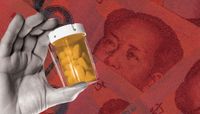
As China’s biopharmaceutical industry churns out more innovative molecules, competition for Big Pharma deals is increasing. Credit: Madeline Monroe/C&EN/Shutterstock · US and European pharmaceutical firms are licensing new drug candidates developed in China at an increasing clip.
Some industry watchers see opportunity in China’s biomedical market; others see a threat to biotech. Collaboration may be threatened by geopolitical tensions between the US and China. Two summers ago, venture capitalists at Bain Capital Life Sciences and Atlas Venture went shopping. For $245 million—from both firms, as well as other investors—they bought the rights outside China to an asthma drug candidate made by Shanghai’s Jiangsu Hengrui Pharmaceuticals and formed a new company called Aiolos Bio.The Chinese biomedical engine has hit an inflection point, churning out new molecules with best-in-class and first-in-class potential at a hasty clip. Once known for generics and me-too drugs, China’s biotech industry has recently begun to develop more innovative medicines for cancer, autoimmune diseases, and cardiometabolic conditions.China’s drug industry looked very different before the 21st century. Pharmaceuticals in the country comprised mostly traditional medicines, imported drugs, and cheap, generic domestic versions of drugs made elsewhere.Over the course of the 2010s, China made changes to its drug regulatory agency in part to better mirror counterparts such as the FDA and the European Medicines Agency. Manufacturers would no longer have to meet vastly different requirements to market their products in different geographies. In 2015, China’s State Council released the landmark industrial policy Made in China 2025 (PDF).

AstraZeneca is investing $50 billion to expand its drug manufacturing in the US. Johnson & Johnson is pouring $55 billion into domestic production and research. And Eli Lilly said it will spend $27 billion to build four new manufacturing plants here. In total, the planned investments exceed $250 billion, according to two industry ...
AstraZeneca is investing $50 billion to expand its drug manufacturing in the US. Johnson & Johnson is pouring $55 billion into domestic production and research. And Eli Lilly said it will spend $27 billion to build four new manufacturing plants here. In total, the planned investments exceed $250 billion, according to two industry analysts.They both manufacture sterile injectable drugs, among other products. Other companies are more hesitant. “We’re not sure the market will support it if we build it,” said John Murphy III, the industry association’s CEO, noting that reimbursements are so low that companies may not get returns on their investments.The Trump administration is in the midst of negotiating various trade deals and has yet to release the findings of its investigation into national security implications of drug imports, which is expected to set the stage for tariffs on the industry.The pharmaceutical industry is a global web, with ingredients and finished drugs being manufactured in a multitude of locations around the world.
Pharmaceutical industry refers to the segment of business devoted to the design, development, and manufacture of chemical products for use in the diagnosis and treatment of disease, disability, or other dysfunction, or to improve function.
Drug industry; Drug company; Pharmaceutical company · Related Articles: Glossary: Drug ·Pharmaceutical industry refers to the segment of business devoted to the design, development, and manufacture of chemical products for use in the diagnosis and treatment of disease, disability, or other dysfunction, or to improve function.


Amid widespread cuts at the FDA, concern is rising over whether the agency will fall behind on looming drug review deadlines.
Pharmaceutical companies are growing increasingly concerned widespread cuts at the Food and Drug Administration could set the agency back as crucial review deadlines loom. Why it matters: Health industries pay billions developing and shepherding drugs through the regulatory process, including user fees that help ensure there are enough staff to evaluate products on a predictable timeline.And, he said: "If you have a drug that's safe and effective, but it's kind of sitting on the shelf because someone doesn't have time to review it, that's a public health detriment as well." State of play: There have not been any delayed approval dates tied to the cuts so far, but the loss of key FDA officials and career staffers could put that at risk, industry leaders warn.Multiple cuts — such as the elimination of the FDA's library staff who offer critical research assistance to drug reviewers or deep reductions among the lawyers in the Office of Regulatory Policy who write draft guidances and Federal Register notices — could slow work even more, the staffer said. "I'm sure [industry is] upset about these layoffs.As yet, there have been no delays to drug approvals, but industry watchers worry that may not last in light of the agency job cuts.
The International Federation of Pharmaceutical Manufacturers and Associations is the voice of the innovative pharmaceutical industry, collaborating for global health progress to improve lives everywhere.
The International Federation of Pharmaceutical Manufacturers and Associations (IFPMA) represents the innovative pharmaceutical industry at the international level and in official relations with the United Nations.We are the voice of the innovative pharmaceutical industry, collaborating for global health progress to improve lives everywhere.Explore how the innovative pharmaceutical industry is collaborating across global health actors to support the Sustainable Development Goals in low- and middle-income countries.

This listing is limited to those independent companies and subsidiaries notable enough to have their own articles in Wikipedia. Both going concerns and defunct firms are included, as well as firms that were part of the pharmaceutical industry at some time in their existence, provided they were ...
This listing is limited to those independent companies and subsidiaries notable enough to have their own articles in Wikipedia. Both going concerns and defunct firms are included, as well as firms that were part of the pharmaceutical industry at some time in their existence, provided they were engaged in the production of human (as opposed to veterinary) therapeutics.






